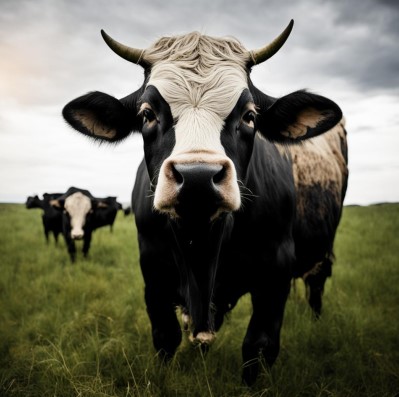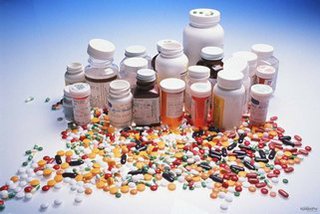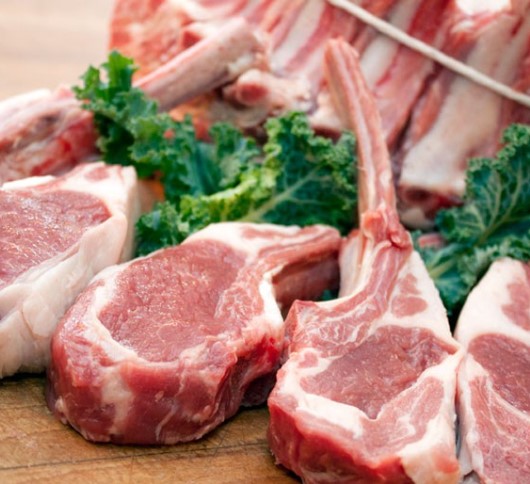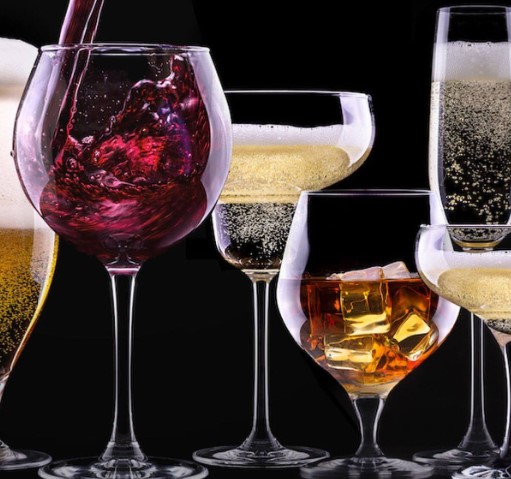INTERVIEW: Nazarenko about technical regulation, food safety, toys and “gray” certification
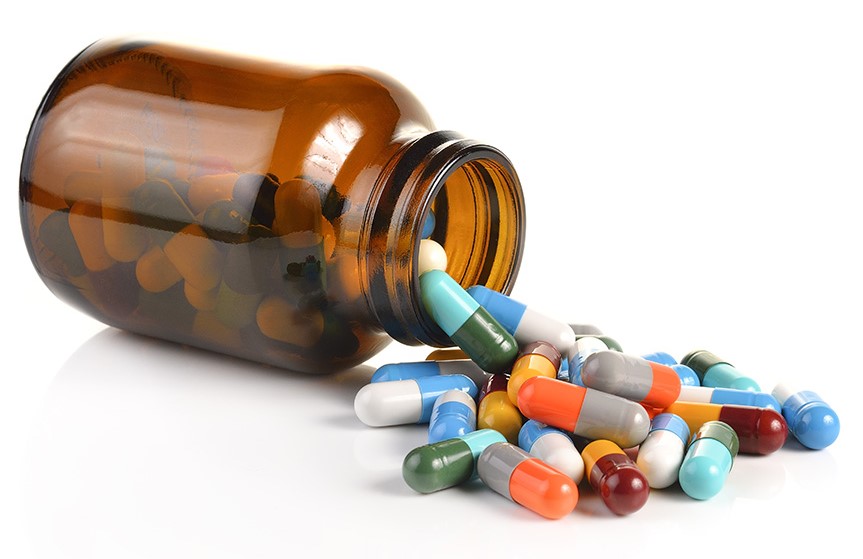
Member of the Board (Minister) for Technical Regulation of the Eurasian Economic Commission Viktor Nazarenko in an interview with a BELTA correspondent spoke about the system of technical regulation being built in the EAEU , ensuring the safety of food products and toys, protecting the union’s single market from unsafe products, the problem of “gray” certification, as well as goals and plans for the near future.
- The unified system of technical regulation of the Eurasian Economic Union is an ambitious intersectoral project that has been implemented for more than 10 years. What results do you consider the most significant for the Belarusian economy? What tasks do you think are the most important?
- As correctly noted, the creation of a unified technical regulation system is truly a large-scale integration project, which has become an objective need of all interested parties. The project is also ambitious in terms of its goals.
The unified system of technical regulation consists of elements that ensure both the reduction of technical barriers and the protection of the domestic market from unsafe products, as well as increasing the competitiveness of products of the member states of the union. The constant interaction of authorized bodies, industrial enterprises, certification bodies and testing laboratories, business and consumers of the member states of the union ensures the functioning of all its elements taking into account the requirements of today. We managed to create the basis of a supranational legal framework in the field of technical regulation on key issues provided for by the Treaty on the EAEU.
Today these are 52 unified technical regulations: from food products and goods for children and adolescents to mechanical engineering products, railway and road transport, which are applied directly in the territories of the EAEU countries without exceptions, additional requirements and procedures. As a result, conditions for their free circulation in the EAEU countries have been provided for a wide range of goods, which has had a positive impact on the growth of the share of mutual trade in the total volume of foreign trade of the EAEU (in 2015 - 13.5%, in 2022 - 15.5% ).
The use of uniform certificates and declarations of product conformity with the requirements of the technical regulations of the union has abolished additional procedures for the recognition of national documents. This ensured that the costs of manufacturers, including the Republic of Belarus , for carrying out these procedures were at least halved when supplying their products to the countries of the union. For consumers of the republic, the safety of products that meet the requirements of technical regulations of the EAEU is guaranteed. They are informed about this by marking products with the Eurasian Mark of Conformity (EAC).
Along with 47 technical regulations that have entered into force, lists of interrelated standards have been approved, which act as a key factor for increasing the technical level of Belarusian products and improving technology. Undoubtedly, all this should help to increase the level of development of both industry and the social sphere of the Republic of Belarus, and most importantly - to provide high-quality and safe products to the consumer.
To create conditions for improving the quality and competitiveness of Eurasian products, including those exported , and the coordinated development of national quality infrastructures, work is underway on the concept of creating a Eurasian system for ensuring product quality. The draft concept is planned to be presented for discussion to the presidents of the five countries in mid -2024 .
Existing difficultiesAt the same time, the tasks of completely eliminating technical barriers to trade and ensuring effective protection of the market from unsafe products have not been fully implemented. First of all, these are issues of establishing and implementing uniform mandatory requirements. The deadline for adopting technical regulations (amendments to them) is being delayed. Of the 11 planned for development, only three EAEU TRs (27%) have been adopted. Of the 43 planned changes to technical regulations, only 11 (25.6%) were made. This is mainly due to the long time it takes to develop the first editions of draft documents and unreasonably prolonged procedures for their internal approval in individual countries; in some cases, it is very difficult to develop consensus on certain provisions of technical regulations.
There are problems with delays in providing technical regulations with modern interstate standards (GOST). To date, about 1.8 thousand GOSTs have been approved out of more than 3 thousand planned (60%). This situation is complicated by the “obsolescence of the stock of standards” (the average age of GOST is more than 20 years). This also significantly affects the level of harmonization of interstate standards with international requirements.
Priority tasksAs part of the implementation of the strategic directions for the development of Eurasian integration until 2025, approved by the heads of the EAEU member states, specific steps are planned and implemented to develop all elements of a unified system of technical regulation. Of paramount importance is the formation of a unified base of mandatory requirements - this is the basis for barrier-free mutual trade.
It is important to implement the plan for the development of the EAEU TR (amendments to them) within the established time frame. This will make it possible to establish uniform safety requirements for a number of types of products, including feed and feed additives, including for non-productive animals, as well as construction materials and products.
It is necessary to complete work on the adoption of changes to the procedure for developing, adopting, amending and canceling the EAEU TR. This will reduce the time required to approve uniform mandatory requirements and ensure their adjustment by almost 40%.
In the supranational mechanism for the formation of uniform requirements, standardization occupies a special place. A significant proportion of the standards interconnected with the technical regulations of the EAEU are made up of advanced national standards of the union member states. This situation is due to the fact that the number of GOST developments on the CIS site currently cannot fully satisfy the rapidly growing needs of the union for modern standards. Therefore, we are forced to include national and departmental documents in the lists of standards interconnected with technical regulations. But this is a temporary measure, not a way out of the situation.
Organization of work on planning and development of interstate standards interconnected with the technical regulations of the union requires active coordinated actions on the platforms of the EAEU and the CIS. Intensifying the processes of developing modern and popular interstate standards and ensuring a systematic update of the GOST fund is possible and realistic with the active and coordinated work of both authorized bodies and industry of the countries of the union. I would especially note the importance of increasing the volume and sources of funding for the development of GOST in the Member States.
Guaranteed protection of the common market from unsafe products directly depends on the effectiveness of control and supervision of compliance with established requirements. The level of this activity in countries is very different - from systemic control over the entire range of products in some to moratoriums on control activities in others.
It is required to introduce real mechanisms for the operational interaction of authorized state control (supervision) bodies among themselves and with the national accreditation bodies of the EAEU countries. This is necessary, first of all, in cases of detection of unsafe products on the single market, as well as when establishing facts of violations of procedures for assessing the conformity of products with the requirements of the technical regulations of the union.
In addition, the commission began to develop a legal mechanism for promptly considering the issue of exclusion from the unified register of conformity assessment bodies of the union, as well as from the unified register of issued certificates of conformity and registered declarations of conformity based on negative results of state control (supervision) over compliance with the requirements of the EAEU TR.
- Technical regulation mechanisms work both to protect the EAEU market from unsafe products and to expand the EXPORT capabilities of our industry. Are there any problems?
- Technical regulations of the Union are developed taking into account relevant international standards, regional documents, national standards, national technical regulations or their projects. For example, during 2011-2012, 31 technical regulations were adopted. Moreover, they were all developed from 2009 to 2011, and their requirements are based on international documents from an even earlier period.
At the same time, product requirements, including mandatory ones, must be improved taking into account the development of science, technology, and production. The discrepancy between the requirements of technical regulations and related standards that have entered into force with the level of scientific and technological development or the development prospects of the relevant sectors of the economy becomes the reason for reducing the competitiveness of products and their export potential.
In September of this year, the commission approved the procedure for periodically assessing the scientific and technical level of the technical regulations of the union and lists of standards for them. Member states will carry out assessment work at least once every five years in accordance with a plan approved by the commission council. Representatives of all member states will participate in the work. Responsible competent organizations will be determined by the member state, which will be assigned specific technical regulations of the EAEU.
We are now working with countries to formulate a draft of this plan. According to our assessment, 26 technical regulations may be included in it for 2025-2029 - for elevators, fuel, light industry products, tractors, low-voltage equipment, a number of technical regulations for food products and others.
Currently, 47 technical regulations that have entered into force have approved lists of interrelated standards, including more than 15 thousand items, including more than 10 thousand interstate standards of the CIS (GOST), about 4.5 thousand national standards and more than 900 different research methods . Earlier, I drew attention to the problem associated with the delay in the development by member states of the union of interstate standards for technical regulations. At the same time, new versions of international standards are constantly appearing, which are of primary importance for improving the quality and competitiveness of products produced by the “union” industry.
Thus, in the Member States, it is necessary to intensify activities, first of all, on interstate standardization, so that the industry has modern requirements that today guide the majority of manufacturers in the world.
- The creation of equal competitive conditions in the union market is often discussed in the EEC. How does the EAEU solve the problem of “gray” certification? Can these documents be trusted?
- The problem raised by this issue is complex. We talked about her at the beginning. In continuation of the answer to the first question, I note that in recent years, manufacturers of “union” products have been paying attention to the difference in practice in approaches to conformity assessment for domestic and foreign manufacturers. This also applies to the completeness of testing and assessment of production conditions to the requirements of the unified technical regulations of the union.
Currently, the unified register of the union includes about 1.5 million certificates of conformity and more than 9 million declarations of conformity, while the share of certificates of conformity issued for foreign products in the general market of the union is about 67%. Unified conformity assessment documents were issued or registered by 504 certification bodies based on the evidence base provided by 2,302 testing laboratories, whose competence is confirmed by national accreditation.
One of the reasons for the large number of documents issued for foreign products is the actions of certain unscrupulous certification bodies and testing laboratories that issue certificates without evidence (without carrying out all the mandatory procedures established in the union). With the connivance of unscrupulous conformity assessment bodies, a network of persons authorized by foreign manufacturers has formed, representing dozens of foreign companies and bearing no real responsibility for product safety. The result is the creation of a more favorable regime for manufacturers from third countries and unprecedented preferential conditions for the release into circulation of imported products with unconfirmed safety.
We expect that clear requirements for persons authorized by manufacturers established in the Treaty on the EAEU, and the formation of such an electronic database as a unified register of persons authorized by manufacturers, will ensure traceability of imported products and streamline the presence of persons authorized by manufacturers in the common market of the union.
To eliminate cases of falsification of documents assessing compliance with the requirements of the technical regulations of the Union, a package of changes to the system procedures has been prepared and entered into force this year, defining uniform forms of certificates and declarations to the requirements of the technical regulations of the Union and the rules for their execution, the formation and maintenance of a unified register of such documents, and also the procedure for registration, suspension, renewal and termination of declarations of product conformity with the requirements of the technical regulations of the Union.
We continue other work to reduce the number of unjustifiably issued conformity assessment documents by unscrupulous certification bodies and testing laboratories. The creation of a unified register of research (test) and measurement protocols issued during the assessment of product compliance with the requirements of the technical regulations of the Union will be one of the mechanisms that will ensure transparency of the conformity assessment process in terms of issued documents. The corresponding draft procedure for the formation and maintenance of a unified register of protocols is being agreed upon in the countries.
Undoubtedly, in the single market of the union, the majority of manufacturers and importers are respectable. They actually test manufactured and imported products for all safety indicators. Therefore, these market participants can and should be trusted. It is also important to monitor information in official sources and on the web resources of the country’s supervisory authorities, for example in the “Hazardous Products” system, which is maintained in Belarus and posted on the Gosstandart website.
- An example of the latest significant changes in the field of food safety is changes to the technical regulations of the Customs Union on the safety of food additives and flavorings.
- To ensure the circulation of safe products in the customs territory of the Union, the commission, together with the member states, carries out systematic work to establish uniform safety requirements. An area of special attention is food products ; the requirements for it are established in 13 technical regulations of the union, 12 of which have entered into force.
Over the past five years, 11 changes have already been made to certain technical regulations of the union in the field of food products and the technical regulation of the union “On the safety of poultry MEAT and its processed products” (EAEU TR 051/2021) has been adopted.
The development of draft technical regulations of the EAEU on the safety of feed and feed additives, including for non-productive animals, the safety of materials in contact with food products, as well as 10 draft amendments to “food” technical regulations is underway. In particular, on August 29, 2023, by decision of the commission council No. 84, amendments No. 2 to the technical regulations “On the safety of food additives, flavorings and technological aids” (TR TS 029/2012) were adopted.
Changes to these technical regulations are based on modern international and scientific data, are comprehensive and apply to food additives, flavorings and auxiliary products. They are presented on more than 500 pages and provide for updating the main sections of TR CU 029/2012 and all annexes to it, taking into account law enforcement practice over 10 years of its application. The list of food additives was reduced from 362 to 349 by eliminating 19 items and introducing 6 new food additives. The results of an assessment of public HEALTH risks carried out in RUSSIA in relation to certain food additives, including those containing aluminum nanoparticles (additives such as E555 and E556, are excluded from the list), have been formalized by law.
The list of flavoring substances permitted for use in the production of food flavorings has been significantly expanded. For each flavoring substance, an indication of the content of the main substance, the area of application and the maximum permissible level (if any) in food products is provided.
In addition, the changes apply to enzyme preparations, including those of microbiological origin, the list of which has been expanded from 56 to 331. They are used for processing vegetables and fruits, production and processing of dairy products, production of meat and fish products, beer, wine and alcoholic beverages, bakery products and grain products, coffee and tea, etc. Experts also worked with terminology: they brought the names of individual types of products into line, for example, instead of the name “preserved fish”, the updated name “preserved fish products” was included, instead of “caviar” - “grained caviar, caviar fish products, salted caviar”caviar - canned", instead of "sausages and meat products" - "sausages and meat products (poultry)" and others. The changes come into force on February 27, 2024.
For the adaptation and smooth transition of industry and business to new requirements, 36 months are provided, during which declarations of conformity registered in accordance with the requirements of TR CU 029/2012 without taking into account the changes made will be valid, and 18 months for the production and release of products into circulation, if any. conformity assessment documents. Products released into circulation will circulate on the market during the expiration date established by its manufacturer. The effect of harmonizing the requirements of TR CU 029/2012 with constantly updated international legislation will satisfy the needs of manufacturers seeking to make their production as modern, variable and competitive as possible.
- How is the issue of establishing standards for antibiotic residues in food products resolved? After all, this is important for maintaining people’s health.
- On June 23, 2023, changes were adopted to the technical regulations TR CU 021/2011 “On the safety of food products”, concerning the regulation of the maximum permissible levels of residual content of veterinary drugs in food products of animal origin. They come into force on July 10, 2024.
The purpose of these changes is to resolve the problem of different interpretations by government agencies of the results of monitoring the residual content of veterinary drugs in food products of animal origin. The document contains provisions regarding the regulation of the residual content of veterinary drugs both in unprocessed food products of animal origin and in processed food products of animal origin (for example, the MRL for the residual content of ampicillin (not more than 0.004 mg/kg) is established for MILK and dairy products , the MRL for the residual content of doxycycline (no more than 0.1 mg/kg) is established not only for meat (as it was before), but also for meat products). This is a new, one might say innovative, direction in establishing requirements for processed food products of animal origin.
Standards for maximum permissible levels of residual content of veterinary medicinal products and pharmacologically active substances are established in food products of animal origin for 75 named veterinary medicinal products. For others, standardization will be carried out at the “not allowed” level, taking into account the sensitivity of the determination method included in the list of standards to TR CU 021/2011.
At the same time, the standards for the residual content of veterinary drugs (antibiotics) in relation to milk, meat, poultry, fish, eggs and products made from them, as well as honey for the purpose of assessing the conformity of these food products have not changed and remained the same, previously established in the TR CU 021/2011.
It is important to understand that all established standards must be monitored by the enterprise during production control. They will also be monitored when implementing supervisory measures to ensure compliance with the requirements of technical regulations.
Currently, the commission, together with the member states, is actively working to formulate changes to the list of standards for technical regulations in order to maximally fill it with methods for determining the residual content of veterinary drugs in food products. Such changes must be adopted before the date of entry into force of the changes, that is, before July 10, 2024.
In turn, at the commission site, work is being carried out to coordinate and make a decision of the commission board on the transitional provisions for the entry into force of new requirements. At present, the procedure for public discussion of the draft decision has been completed and the relevant issue has been included for discussion on the agenda of the next meeting of the Advisory Committee.
The draft decision of the commission board determines a transition period of 18 months from the date of entry into force of changes to the technical regulations. During this period, production and release into circulation in the customs territory of the Union of food products are allowed in accordance with the mandatory requirements previously established by TR CU 021/2011 "On the safety of food products", TR CU 024/2011 "Technical regulations for fat and oil products", TR TS 033/2013 "On the safety of milk and dairy products", TR TS 034/2013 "On the safety of meat and meat products", TR EAEU 040/2016 "On the safety of fish and fish products" and TR EAEU 051/2021 "On the safety of meat poultry and its processed products." In addition, the draft decision of the commission board allows the circulation of such products within the expiration date established by its manufacturer.
- Recently there has been a wave of indignation against “scary” toys that pose a psychological danger to children. Is this also the scope of technical regulation?
- This issue was comprehensively considered by the commission, and it concerns not only the scope of technical regulation, but also ensuring the protection of children from information that is harmful to their health and development. At a meeting of the commission’s council in January of this year, Belarus considered a proposal to amend the technical regulations TR CU 008/2011 “On the safety of toys” aimed at protecting children from toys that could harm their mental development.
Based on the results of joint work with the participation of representatives of authorized bodies, including those ensuring the protection of children’s rights, as well as representatives of industry, scientific organizations and the expert community, it was established that currently in countries there are no requirements for the psychological safety of products, compliance with which could be objectively assessed. There are also no methods for assessing compliance with such requirements and no appropriate qualified specialists to conduct such an assessment.
At the same time, the key factor influencing the state of a child’s mental health is the game and the image of the object of the game laid down in the game, and not the object used for it. Previously, a lot of work was done at the CIS site and in 2009 a model law was adopted on the protection of children from information harmful to their health and development. In Kazakhstan and the Russian Federation, corresponding laws have been adopted on its basis. Belarus, Armenia and Kyrgyzstan do not yet have such laws.
The Model Law regulates relations related to the protection of children from information harmful to their physical and mental health, moral, spiritual, mental, physical and social development, including the circulation of information products intended for children and information products intended for indefinite audiences. circle of people
Also at the commission site, the possibility of establishing requirements for the cybersecurity of digital toys and security to prevent risks associated with access to confidential information about children and their families and the theft of personal data was discussed. However, these risks are not subject to technical regulation at the EAEU level and should be considered within the framework of national legislation.
Taking into account that the majority of toys, for which there are questions about their negative impact on the mental health of children, are copies of cartoon characters, films, computer games, books and magazines that are information products, the following approach has been developed to establish requirements to ensure the exclusion of release into circulation on the domestic market of the Union of toys and other products intended for children and adolescents that negatively affect the mental health of children.
The first is to amend the technical regulations for toys in terms of indicating the age-appropriateness of toys and consider the possibility of synchronizing it with the age category of information products with the characters that the toy copies, as well as establishing minimum requirements for toys in terms of their negative impact on the mental health of children. And this is where the sphere of technical regulation comes into play.
The second is to recommend that Armenia, Belarus and Kyrgyzstan implement the CIS model law on protecting children from information harmful to their health and development into national legislation. The scope of national legislation of the member states is already working here in terms of protecting children from information that is harmful to their health and development.
Third, to recommend that all EAEU member states, within the framework of national legislation, consider the possibility of extending the term “information products” to board games, as well as other products intended for children and adolescents, which may contain images harmful to the health and (or) development of children ( for example, for children's clothing, dishes, briefcases and other products). This aims to harmonize the scope of protection measures.
For example, currently books for children are information products in accordance with legislation on protecting children from unsafe information. At the same time, the technical regulations on the safety of products for children and adolescents (TR TS 007/2011) in relation to books for children establish requirements for the text font, spaces between words, clarity of strokes, and the size of the spine margins. And the legislation on protecting children from information harmful to their health establishes requirements for the content of information in such a book.
Thus, the requirements for the information content in information products go beyond the technical regulation of the EAEU and should be regulated primarily at the national level.
BELTA.
Read together with it:
- О самых распространенных причинах пожаров рассказали в МЧС2 октября, Минск. О самых распространенных причинах пожаров рассказал начальник главного управления надзора и профилактики МЧС Дмитрий Турчин на "Предупреждение чрезвычайных ситуаций в осенне-зимний период. Профилактика пожаров и гибели людей от них", которая прошла в БЕЛТА. "В республике наблюдается рост количества пожаров на 7,7%, и на 1......
































